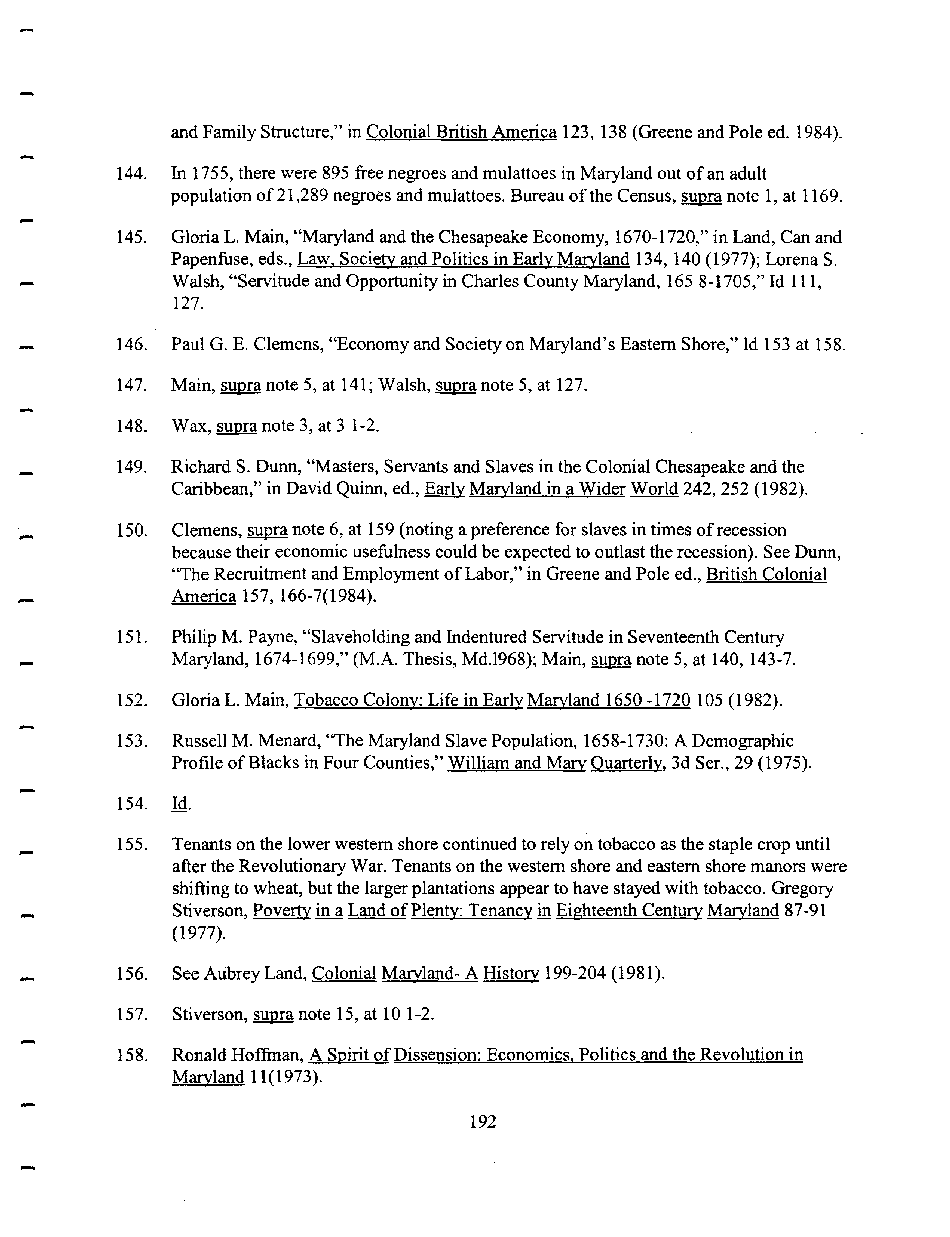|
and Family Structure," in Colonial British America 123, 138 (Greene and Pole ed. 1984).
144. hi 1755, there were 895 free negroes and mulattoes in Maryland out of an adult
population of 21,289 negroes and mulattoes. Bureau of the Census, supra note 1, at 1169.
145. Gloria L. Main, "Maryland and the Chesapeake Economy, 1670-1720," in Land, Can and
Papenfuse, eds., Law. Society and Politics in Early Maryland 134, 140 (1977); Lorena S.
Walsh, "Servitude and Opportunity in Charles County Maryland, 165 8-1705," Will,
127.
146. Paul G. E. Clemens, "Economy and Society on Maryland's Eastern Shore," Id 153 at 158.
147. Main, supra note 5, at 141; Walsh, supra note 5, at 127.
148. Wax, supra note 3, at 3 1-2.
149. Richard S. Dunn, "Masters, Servants and Slaves in the Colonial Chesapeake and the
Caribbean," in David Quinn, ed., Early Maryland in a Wider World 242, 252 (1982).
150. Clemens, supra note 6, at 159 (noting a preference for slaves in times of recession
because their economic usefulness could be expected to outlast the recession). See Dunn,
"The Recruitment and Employment of Labor," in Greene and Pole ed., British Colonial
America 157, 166-7(1984).
151. Philip M. Payne, "Slaveholding and Indentured Servitude in Seventeenth Century
Maryland, 1674-1699," (M.A. Thesis, Md.1968); Main, supra note 5, at 140,143-7.
152. Gloria L. Main. Tobacco Colony: Life in Early Maryland 1650 -1720 105 (19821
153. Russell M. Menard, "The Maryland Slave Population, 1658-1730: A Demographic
Profile of Blacks in Four Counties," William and Mary Quarterly. 3d Ser., 29 (1975).
154. Id.
155. Tenants on the lower western shore continued to rely on tobacco as the staple crop until
after the Revolutionary War. Tenants on the western shore and eastern shore manors were
shifting to wheat, but the larger plantations appear to have stayed with tobacco. Gregory
Stiverson, Poverty in a Land of Plenty: Tenancy in Eighteenth Century Maryland 87-91
(1977).
156. See Aubrey Land, Colonial Maryland- A History 199-204 (1981).
157. Stiverson, supra note 15, at 10 1-2.
158. Ronald Hoffman, A Spirit of Dissension: Economics. Politics and the Revolution in
Maryland 11 (1973).
192
�
|

